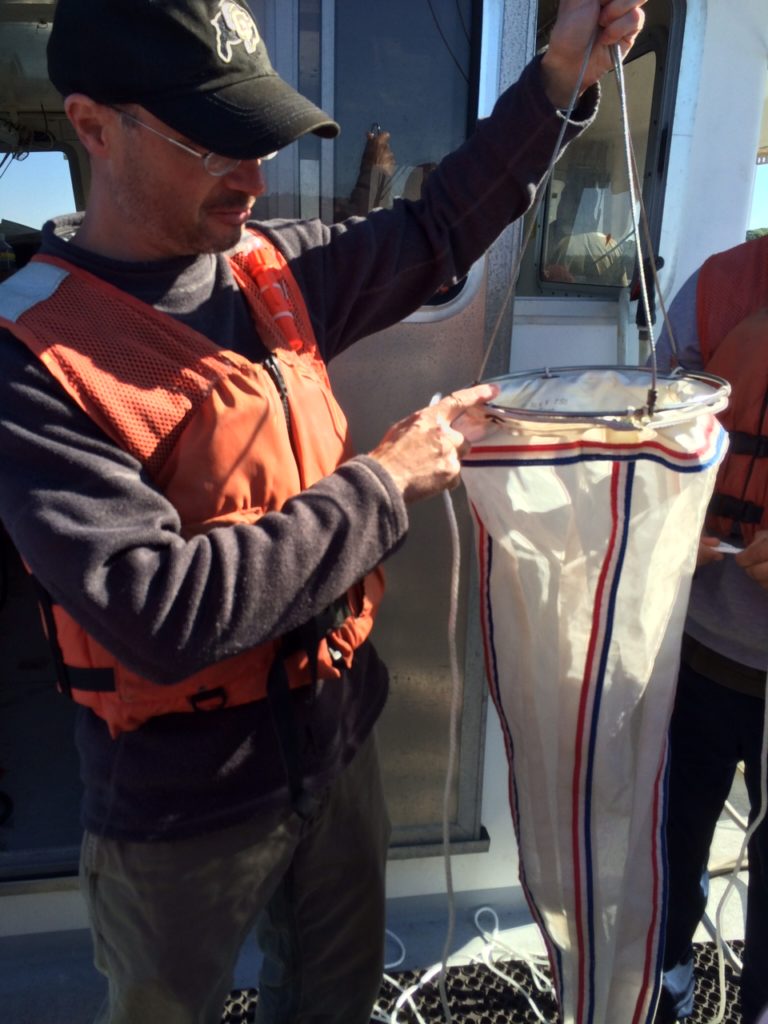We have made it to our 8th destination of this journey! We are currently at the Darling Marine Center in Walpole, Maine. Here we have been thrown into the deep waters of Advance Marine Ecology course at full throttle. Our first objective was to learn about estuaries and to find what sort of patterns we could find. Rather than picking up a textbook and just assuming the material given to us was true, we went out and gathered data ourselves.
The Darling Marine Center is right along the Damariscotta River, which is one of many estuaries along the coast of Maine. As soon as we filled our bellies with fruit and omelets, we took the quick walk down to the dock where Captain Robbie was waiting for us. Once informed of the safety protocols and what to do in various emergency situations, we took off to the head of the estuary.
To understand just a small piece of an estuary ecosystem, we used a Sea-Bird conductivity temperature depth (CTD) profiler. With this instrument we collected temperature, fluorescence, dissolved oxygen levels, salinity, and much more from just this one ring of machine. Along with the CTD profiler, we used two different nets to catch phytoplankton and zooplankton. These samples were taken from six spots along the Damariscotta River from the head to the mouth of the estuary. By using all of this data we created profiles for the Damariscotta River the fall season. From these profiles we can discern patterns in the forces that shape the distribution and abundance of the organisms.
On this trip we saw porpoises, seals, Bonaparte’s gulls, common loons, and many more! Back at the lab we got to see our strange and intricate shaped phytoplankton and zooplankton. We also got to find some Acartia tonsa which is Dr. Teegarden’s favorite little zooplankton with their beautiful blue “bowties.” Speaking of ties, we all learned how to tie a bowline knot!
I can definitely say we got lucky with another great professor from Saint Joseph’s College of Maine. Not only have we been thrown out to explore natural landscapes, but also to learn how to be effective and efficient workers. As Albert Einstein himself would say, “Learn from yesterday, live for today, hope for tomorrow. The important thing is to not stop questioning.”
– Erin Wright-Little







